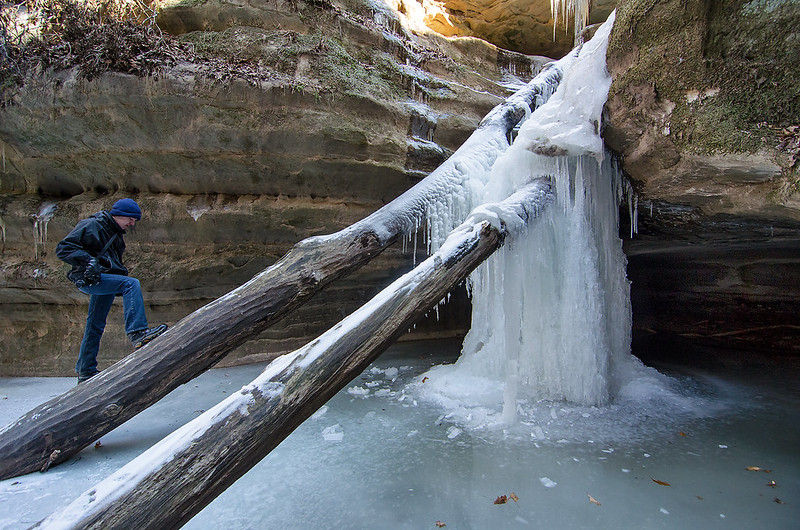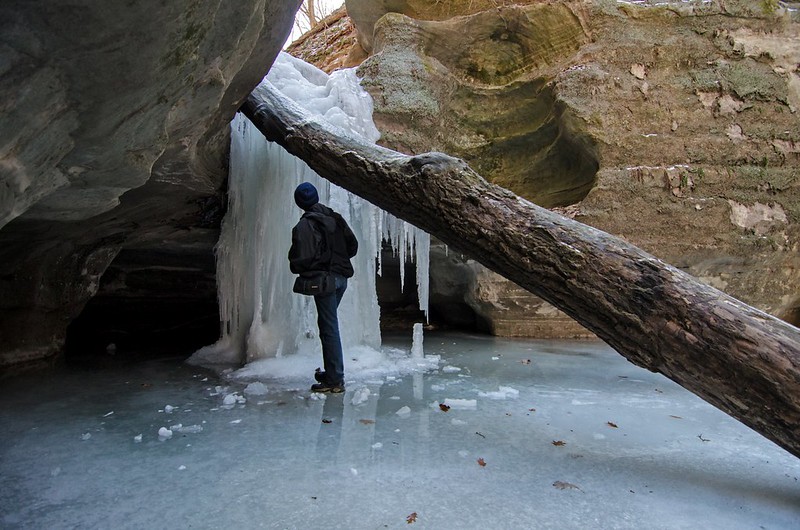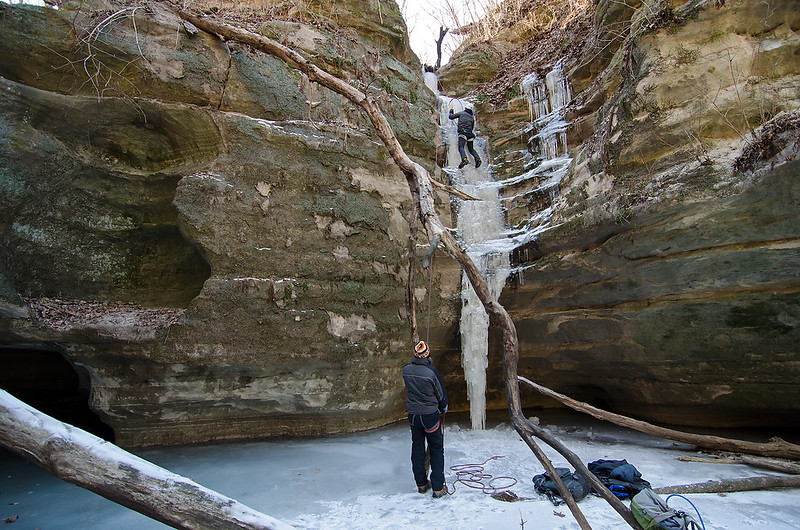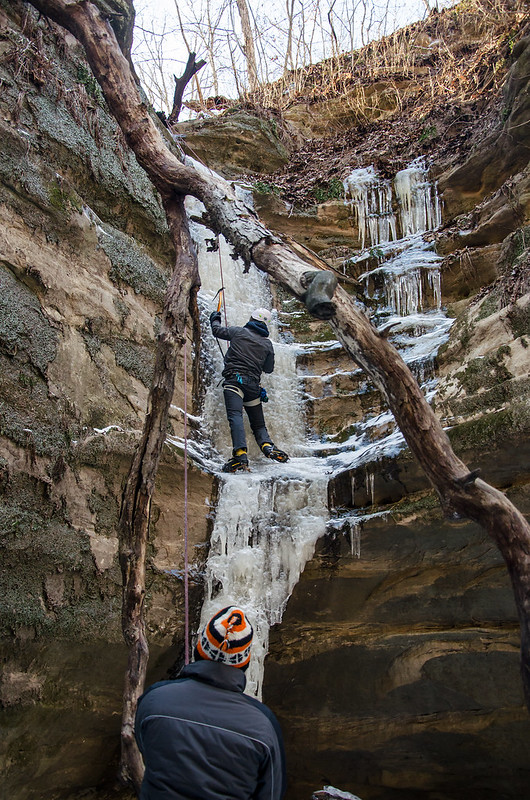
As we approached the end of Kaskasia Canyon, we heard voices of some other visitors along with the sound of falling water. Not surprising, since Kaskaskia Canyon is home to two waterfalls, one substantial and one generally just a trickle. The waterfall was completely frozen over, yet the water ran inside a naturally occuring ice "pipe," created by the falling water and freezing temperatures.
Hearing water inside a frozen waterfall is very common where the flow of water is substantial, but most of the time the water is flowing between the rock wall and the surface ice. This time, the falling water was encased in ice all the way to the canyon floor.

The two logs that lay in the canyon probably assisted in creating the ice "pipe" as the water followed the logs for a bit, before freezing as it fell to the ground. The logs and ice blocked off most of the canyon overhang, creating a small cave. Unfortunately, the falling water was not flowing down the canyon, but puddling about 8 inches deep inside the cave, making exploration wet and uncomfortable. Not to mention the fact that we didn't know the depth of the water under the ice, so venturing inside could have resulted in a fall through the ice into relatively deep water at the foot of a waterfall.

The voices we heard in the canyon belonged to two adventurers, climbing the taller of the two waterfalls. Armed with climbing gear, crampons, and ice axes, the climber made his way up the icy waterfall, resting periodically as necessary.
The cold plays a role in tiring out ice climbers. Keeping one's hands overhead for such a long time can be difficult while climbing, but add to that the fact that warm blood cannot replenish the arms as easily when they're overhead, so the hands become numb and difficult to use.

Disappointed I didn't have my own ice climbing gear, I left the canyon in search of more frozen waterfalls.


No comments:
Post a Comment